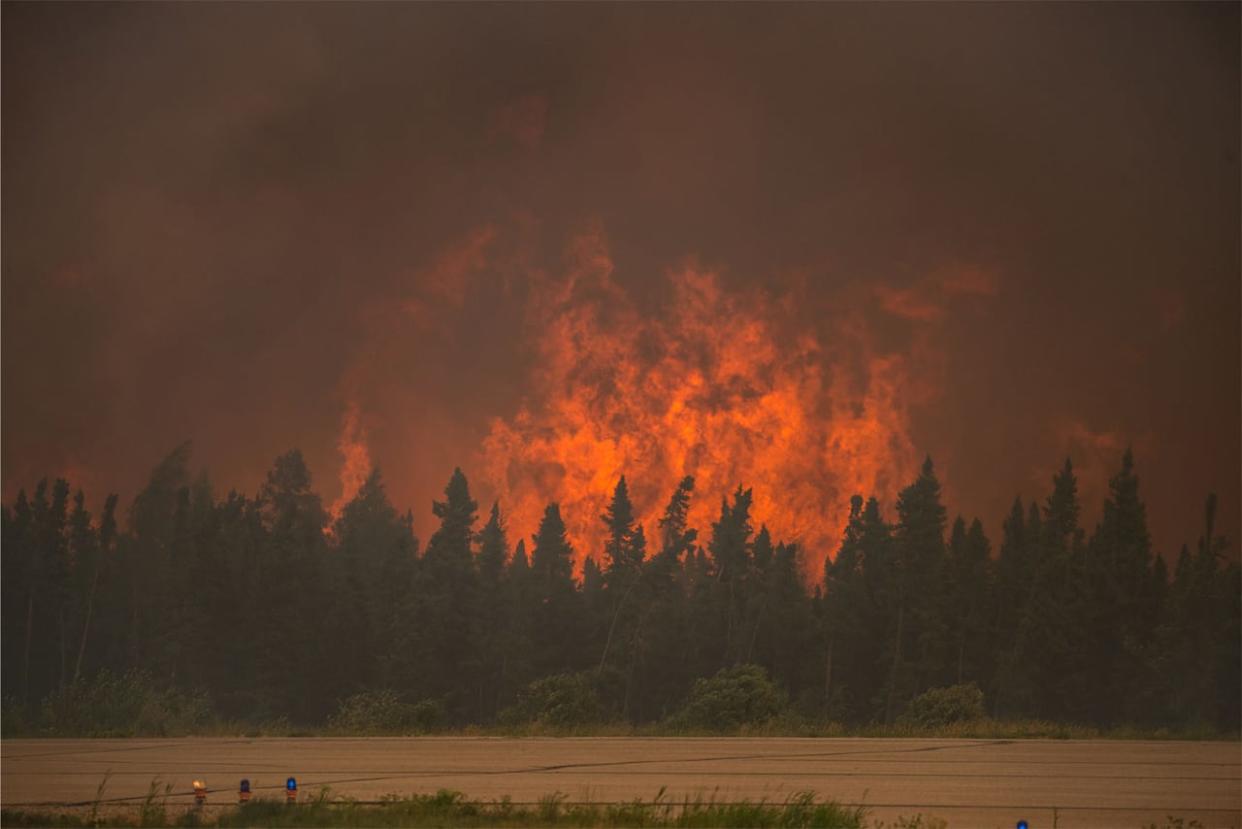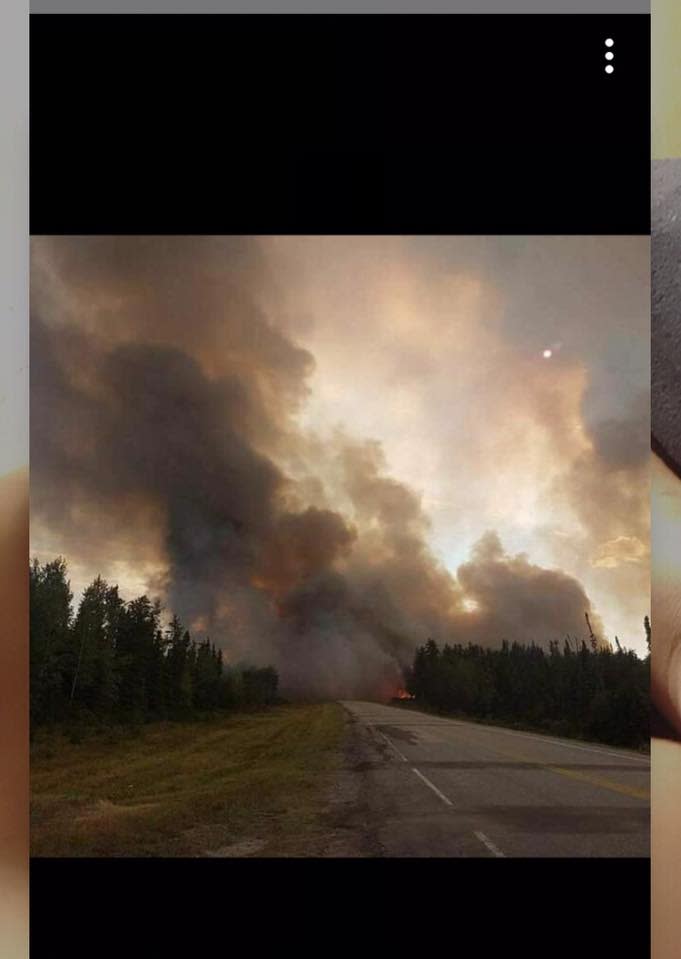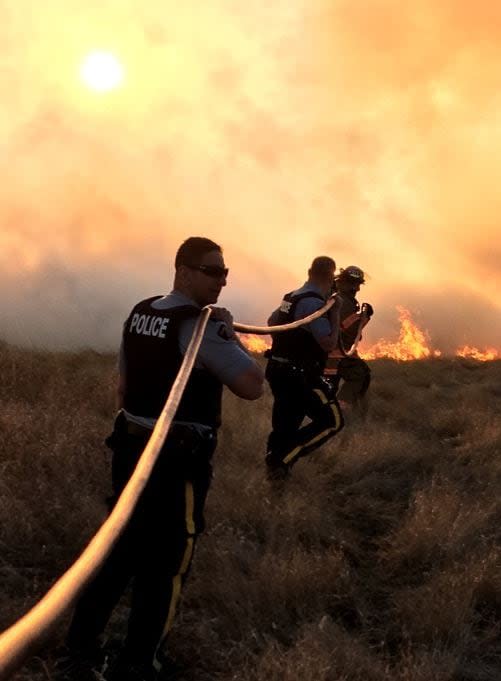How some Sask. communities are preparing for the 2024 wildfire season

Last year was one of the most severe on record for wildfires in Saskatchewan. There were 494 of the fires, and 1.9 million hectares of land burned, about five times the size of Prince Albert National Park, according to the province.
Cliff Buettner, director of forestry and emergency services for the Prince Albert Grand Council, has been dealing with wildfires in this province for more than four decades.
Buettner said humans cause a lot of fires and he wants people to know how quickly things can get out of control.
He said three things are needed for a fire to start: fuel, air and ignition.
"We have the fuel — the dry grass, we have the dry branches, twigs laying on the ground. We have the trees. We have the air. But we need something to get that started," Buettner said in an interview on CBC Saskatchewan's Blue Sky.
That "something" can be a campfire ember, a spark off a train track, lightning or the muffler of an ATV, among many other things.
He recommends keeping a shovel and water nearby when using fire outside, whether it's in your backyard or while camping.
He also suggests making your house fire-smart by cleaning your gutters, not keeping flammable material close by and always having a water source handy.
Buettner said firefighters are training in communities around Saskatchewan to prepare for what could be another intense season.
"Prince Albert Grand Council, as well as Meadow Lake Tribal Council and other independent First Nations along the forest fringe, are being trained as we speak," he said.

The community of Pelican Narrows in northern Saskatchewan was evacuated due to wildfire last year. (Ashley Queens/Facebook)
Renee Carrier is an educator, fur trapper and land user in the Saskatchewan River Delta in northern Saskatchewan. She has been involved in the We Are Fire and the Muskrats to Moose projects. Both use Indigenous-led fire practices and blend them with western fire management strategies.
The Saskatchewan River Delta is called kisiskāciwani-sīpiy maskēko askīy in the Swampy Cree dialect. It is the seventh-largest inland delta in the world, and has an extensive range of plants and animals, and birds.
"The We Are Fire project stemmed out of our cultural practices that have taken place for hundreds of years up in this territory," Carrier said on Blue Sky.
She said the practice entails strategic burning around the edges of lakes and creeks.
"At a certain time of the year, it's really good, because it takes away certain types of plant species and it brings back good plant species for everything from muskrats to moose," she said.
Carrier said they had to stop the intentional burning in the late '80s because of policy changes.
"People obliged. They slowly stopped burning, knowing that fire was good, that we respect fire," she said.
She said the team has been working for 10 years to bring back what they call good fire for the geographical region. The fires are set in appropriate seasons, when there is ice on the lake and snow in the forest so the fire cannot escape.
She said the team is collecting plant species and measuring them every year to provide data to scientists.
"It may not apply to other parts of the province or other parts of Canada, but for here, we're a water-based territory. And for us, it's part of our livelihood and it's part of our cultural practices to burn, to get rid of those plant species," she said.
She said the goal is to bring back plant species like sweet flake and red willow, which animals love to eat and also have value for humans.

A file photo of RCMP officers helping fight a wildfire. (Submitted by RCMP)
Carrier agreed with Buettner about trying to make your home fire-smart.
"We Are Fire and the Indigenous led trappers are fire-smarting their territory. They're cleaning their territory. They're taking prevention of their territory to clean up that really dry fuel that we weren't allowed to burn because it was taken care of for year after year after year," she said.

 Yahoo News
Yahoo News 
